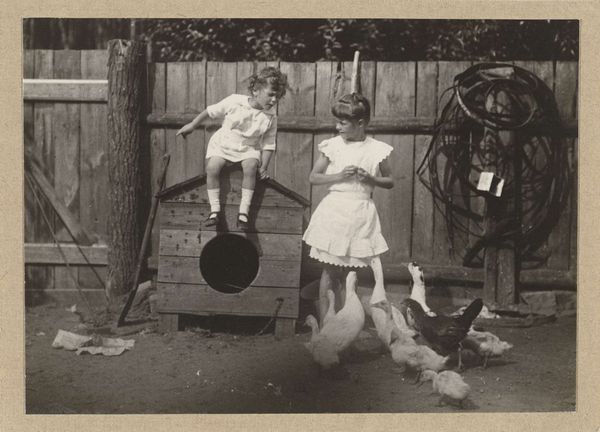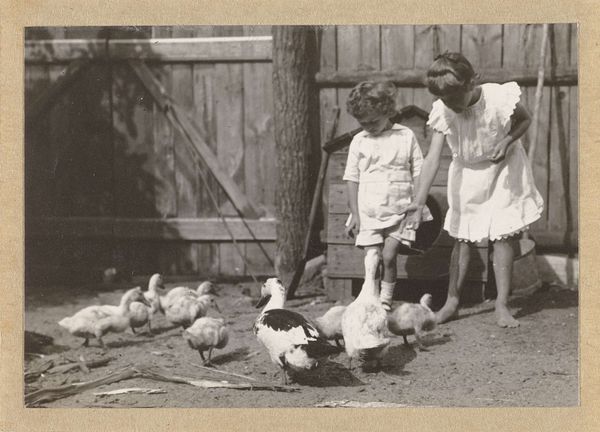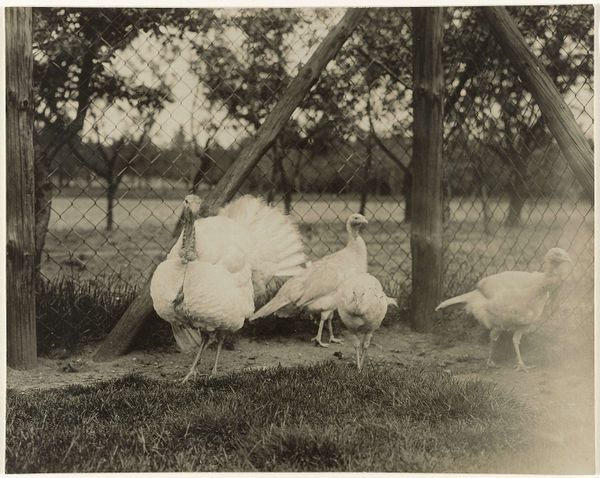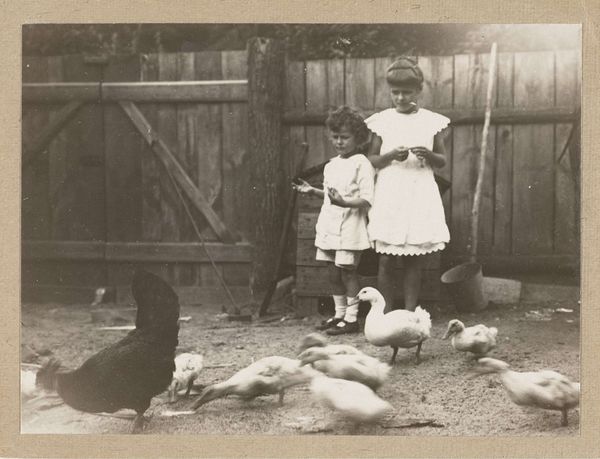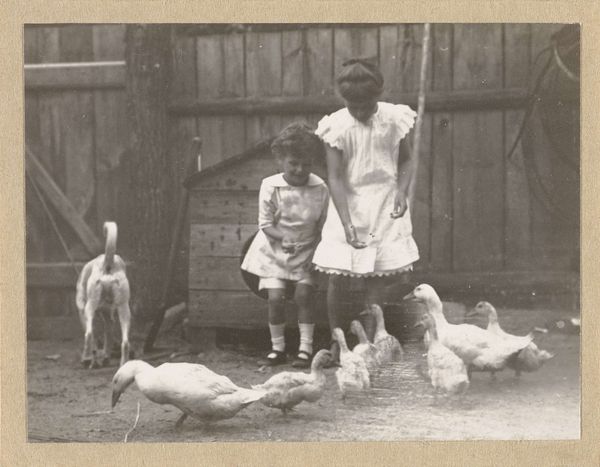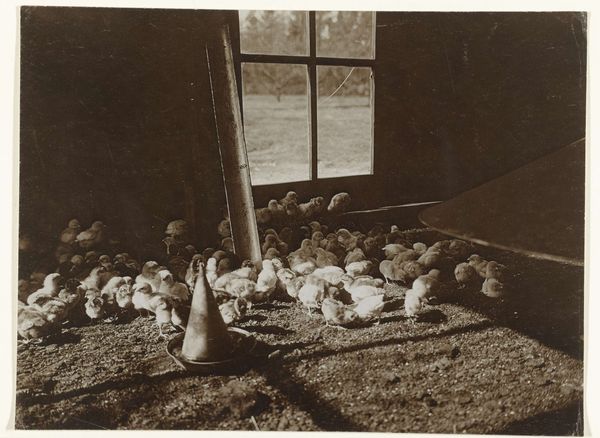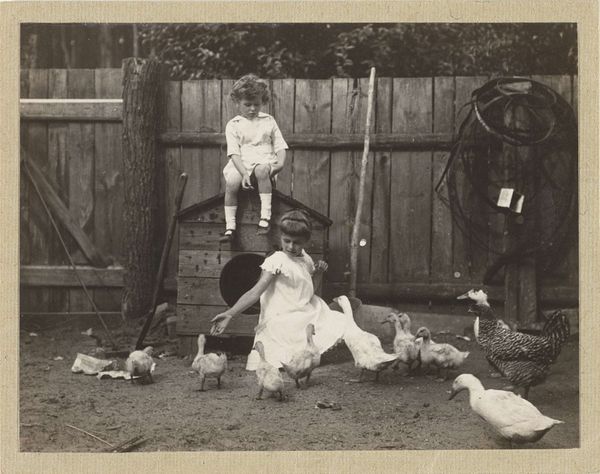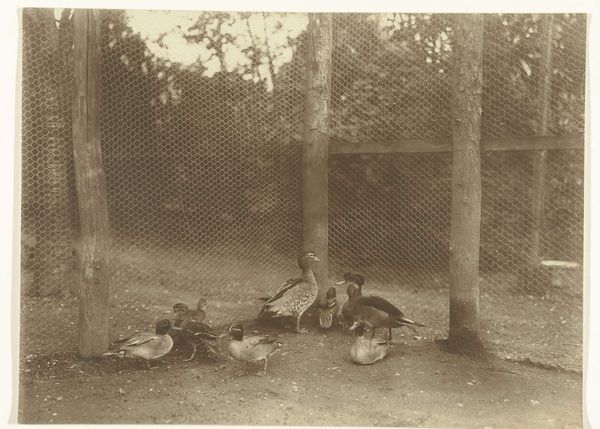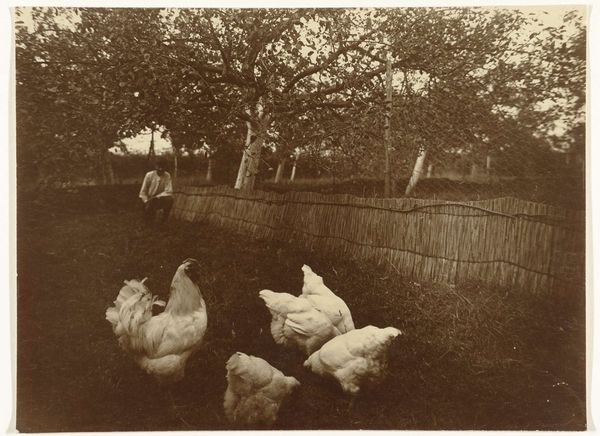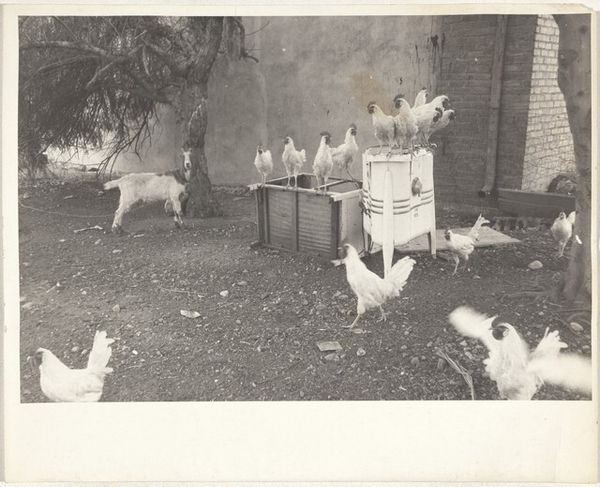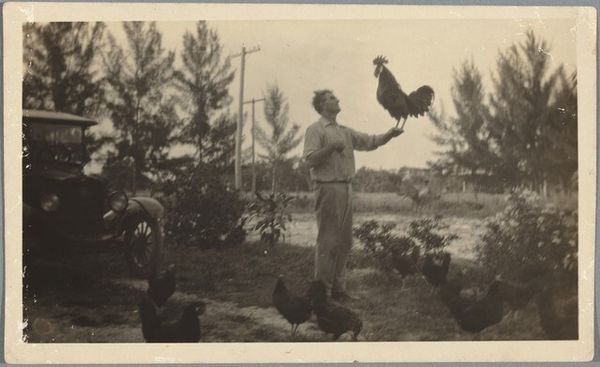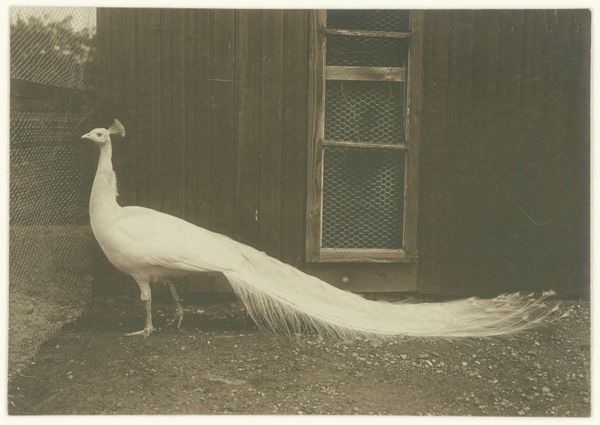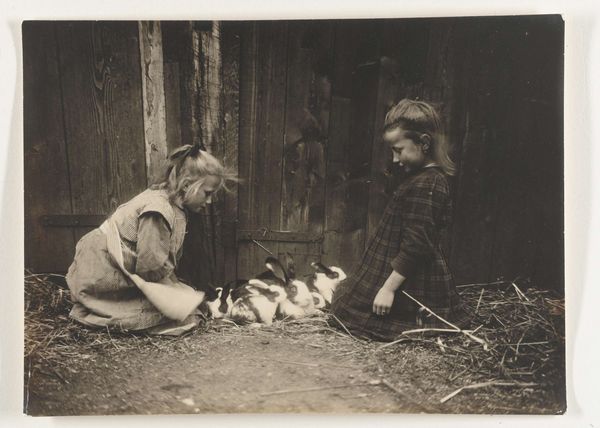
Eckart Titzenthaler, zoon van de fotograaf, staand op een erf met kippen en eenden 1919
0:00
0:00
photography, gelatin-silver-print
#
portrait
#
landscape
#
archive photography
#
photography
#
historical photography
#
gelatin-silver-print
#
realism
Dimensions: height 76 mm, width 103 mm, height 80 mm, width 107 mm
Copyright: Rijks Museum: Open Domain
Editor: Here we have "Eckart Titzenthaler, son of the photographer, standing in a yard with chickens and ducks", a gelatin-silver print by Waldemar Titzenthaler, made in 1919. There's a certain quietness to this scene; a boy absorbed in feeding the fowl. What do you see in this piece? Curator: This image offers a fascinating glimpse into Weimar-era Germany, just after the First World War. Think about the context. Industrialization was rapidly changing society, yet here's a scene deeply rooted in rural life. How does this tension manifest itself in the image? Editor: I see the simplicity of rural life but, thinking of history, maybe it shows an idealised image of domesticity amid the chaos and hardship following the war? Curator: Precisely. This photograph wasn’t just a snapshot; it's carefully constructed. Consider the gaze of the child – averted, introspective. The soft focus adds to the nostalgic feeling. In a period defined by change, could the artist be subtly offering a vision of stability and innocence or, instead, of isolation? The image’s role shifts then. What purpose could this have served? Editor: I guess the photo normalizes a difficult moment by creating something ordinary. Curator: A keen observation. The realism reinforces a familiar simplicity. Now consider this photography within the framework of art at this time: an image of family. Was the art an elitist endeavor, a documentary process or something else? Editor: So the everyday details reveal so much about its time! I hadn't really thought of photography being shaped by such social factors. Curator: Indeed! And through these works, museums reflect the nuances of daily existence during tumultuous periods. Editor: I learned how art depicts more than its subject by reflecting cultural issues from when it was created.
Comments
No comments
Be the first to comment and join the conversation on the ultimate creative platform.
